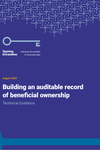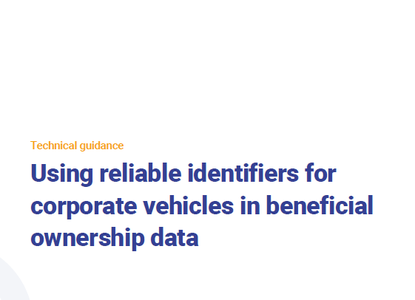Building an auditable record of beneficial ownership
Help us understand how you are making use of resources from the Open Ownership website by filling out this short survey
Publication type
Technical guidance
Publication
Topics
Opening Extractives
Sections
Technology
Open Ownership Principles
Up-to-date and historical records
Summary
This technical guidance from the Opening Extractives programme shows five features that implementers should bear in mind if they want to create good auditable records of beneficial ownership.
The short briefing shows just how important it is to keep historical information about companies, as it helps uncover links. For example, keeping and publishing historical records prevents an entity from obscuring its identity by changing its name, or a beneficial owner to hide by removing themselves from ownership records. Historical and auditable records are also critical for law enforcement to verify ownership chains, apply sanctions for non-compliance, and share data that is interoperable with other agencies, like tax revenue departments, and those investigating international financial crime.
The thinking set out here will inform future updates to the Beneficial Ownership Data Standard.
Key recommendations
- Reliable and comprehensive dates and times: Registers should capture crucial dates for changes and should format these in line with internationally recognised standards such as ISO 8601.
- Reliable identifiers for people and entities should be provided for people and entities so that changes in beneficial ownership can be connected to the correct records.
- Traceable source information: When changes are made to beneficial ownership records, data should be captured about who is updating the information and what type of change is being made.
- Visible information gaps: If information is missing from beneficial ownership records, registers should be able to capture the reasons why it is missing, rather than just leaving a gap.
- Publication policy: Publishers could release an instruction manual for any source of beneficial ownership data to help answer questions from data users.
The important thing is to consider what questions people want to ask of the historical record, and how they will go about their enquiries. The features identified above are far from exhaustive. Others - like producing information as structured, machine-readable data rather than in PDF - are just as important for making records of beneficial ownership usable. But by considering the foundational reasons for beneficial ownership transparency, designers and system architects have the best chance of building the systems that analysts and investigators need now, and for the future.



